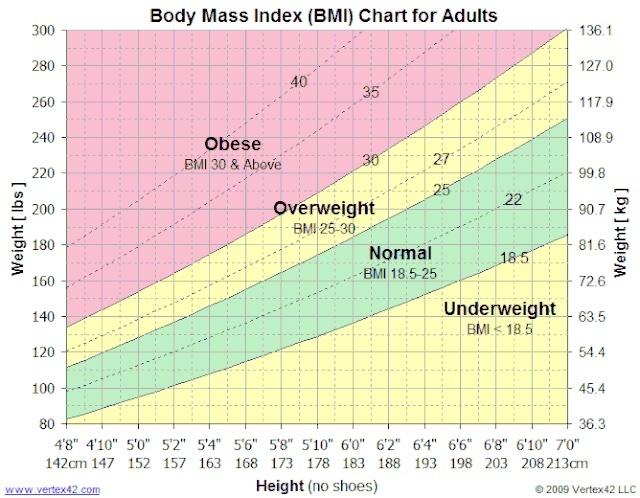In today’s fast-paced world, maintaining motivation in the pursuit of health and fitness goals can be a daunting challenge. Amidst a sea of fad diets and fluctuating exercise trends, the key to sustained progress often lies in the ability to track and measure our efforts effectively. Enter the BMI and progress tracker—a powerful tool that not only helps you monitor your body’s changes but also serves as a constant source of motivation. In this article, we will delve into the strategic use of these trackers, offering authoritative guidance on how to leverage them to stay focused, inspired, and on track towards achieving your health objectives. By understanding how to interpret and act on the data they provide, you’ll gain the insight necessary to transform your fitness journey from a series of daunting tasks into an empowering, measurable adventure.
Understanding the Role of BMI in Your Fitness Journey
Embarking on a fitness journey requires not only determination but also the right tools to gauge your progress. The Body Mass Index (BMI) serves as a fundamental indicator of your overall body composition, helping you understand how your weight aligns with your height. Although BMI is not the sole measure of health, it provides a baseline to monitor changes and set realistic goals. A comprehensive progress tracker complements BMI by offering a visual representation of your achievements, keeping you motivated and informed.
To effectively utilize these tools, consider the following strategies:
- Set Specific Goals: Define clear and achievable targets, such as reducing your BMI by a certain percentage over a set period.
- Track Consistently: Regularly update your BMI and progress tracker to maintain an accurate record of your journey.
- Analyze Patterns: Use the data to identify trends and adjust your fitness routine or diet accordingly.
- Celebrate Milestones: Acknowledge small victories to boost motivation and reinforce positive habits.
By integrating a BMI and progress tracker into your routine, you can maintain a structured approach to your fitness goals, ensuring that each step you take is a step towards a healthier you.

Implementing Effective Progress Tracking Techniques
To harness the full potential of a BMI and progress tracker, it’s essential to adopt techniques that ensure accurate and consistent tracking. Start by setting clear, realistic goals that align with your health aspirations. Break these down into manageable milestones, enabling you to celebrate small victories along the way. Regularly update your tracker with data from consistent measurement intervals, ideally at the same time of day and under similar conditions. This consistency helps in reducing variability and provides a clearer picture of your progress.
Utilize the power of visual aids to keep motivation high. Graphs and charts within your tracker can offer a visual representation of your journey, making it easier to identify trends and adjust your strategy as needed. Consider the following best practices:
- Regular Feedback: Set reminders to review your progress weekly, allowing for timely adjustments.
- Accountability Partners: Share your goals and progress with a friend or community to boost motivation.
- Celebrate Achievements: Recognize and reward yourself for reaching milestones, reinforcing positive behavior.
By integrating these techniques, your BMI and progress tracker becomes more than a tool; it transforms into a dynamic guide that propels you towards your health objectives.
Leveraging Data for Personalized Motivation Strategies
Harnessing the power of data can transform your motivation strategies into a more tailored and effective journey. Understanding your Body Mass Index (BMI) and tracking your progress are pivotal components of a personalized motivation plan. By regularly monitoring these metrics, you can identify trends, set realistic goals, and make informed adjustments to your routine. This approach not only keeps you accountable but also empowers you with insights that drive sustained motivation.
To get started, consider implementing the following strategies:
- Set Clear Goals: Use your BMI data to establish specific, measurable, achievable, relevant, and time-bound (SMART) goals. This clarity will help you focus your efforts effectively.
- Visualize Progress: Create visual progress trackers using tools or apps that allow you to log your BMI changes and milestones. Seeing your progress visually can be a powerful motivator.
- Adjust Strategies: Regularly review your data to identify patterns or plateaus. Use this information to tweak your diet, exercise, or lifestyle habits for better results.
By integrating these data-driven strategies, you’ll not only enhance your motivation but also foster a deeper understanding of your body’s unique needs.
Overcoming Common Pitfalls in Fitness Tracking
When diving into the world of fitness tracking, it’s easy to get overwhelmed by data and lose sight of your goals. To effectively navigate this landscape, it’s crucial to understand and address common obstacles that might hinder your progress. One of the most prevalent pitfalls is becoming too fixated on numbers, like BMI, without considering the bigger picture. Remember, BMI is just one metric and doesn’t account for muscle mass or overall body composition. To keep your motivation high and your perspective balanced, focus on a combination of data points such as body measurements, strength gains, and endurance improvements.
- Set Realistic Goals: Avoid setting unattainable goals that can lead to frustration. Instead, aim for incremental progress that celebrates small victories.
- Consistency Over Perfection: It’s better to have a consistent routine with occasional slip-ups than to chase an impossible standard of perfection.
- Personalize Your Tracking: Customize your fitness tracker to reflect your personal goals and interests, whether that’s weight loss, muscle gain, or improved cardiovascular health.
- Regularly Review and Adjust: Periodically assess your data and adjust your strategy to ensure it aligns with your evolving fitness journey.
Embrace the flexibility of your fitness tracker as a tool for empowerment, not as a strict regimen. By understanding these common pitfalls and proactively addressing them, you can transform your tracking experience into a powerful motivator on your path to better health.
